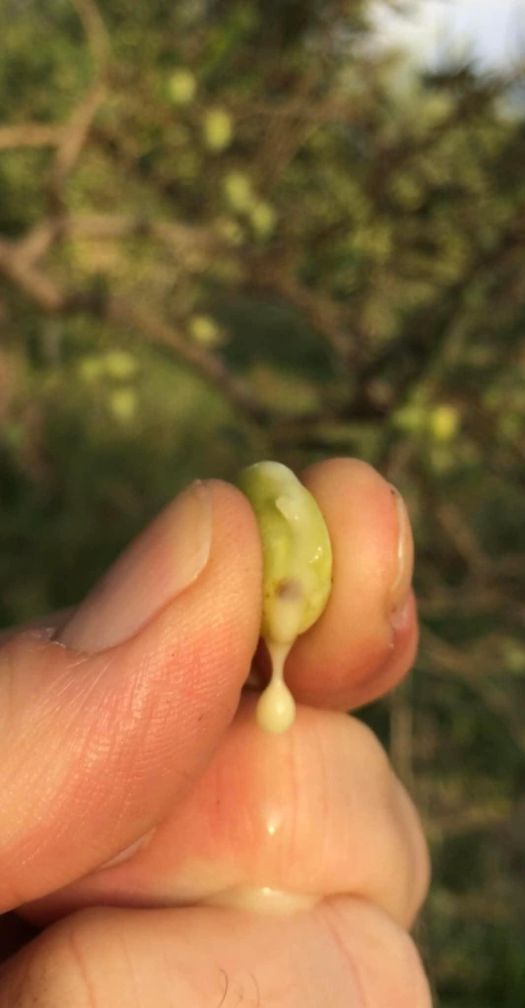Early harvest olive oil is the early oil that comes from the crushing of olives that have not yet wrinkled and still retain their green color because they are still unripe. The ancient Greeks, as mentioned by Dioscorides, called it "omotrives" or "omphacium." In fact, he recommended the use of this particular oil for toothaches and headaches. Hippocrates considered it beneficial for more than 60 diseases. It is also known from ancient Greece that not all oils had the same efficacy and health protection.
The olives are collected in October while they are still unripe and green, and the processing is done on the same day or at most the next day.
Its color is a bright green, due to the chlorophyll of the unripe fruit, which contains high doses of antioxidants.
Its taste is bitter, spicy, and pungent with a strong olive aroma. It is an oil that is not available all year round because it retains its properties for only a few months. From the moment it is harvested and processed, it keeps its intense characteristics until about March. Gradually, as time passes, it will lose its strong smell and taste but not its nutritional properties.
Over time, unprocessed and unfiltered early harvest olive oil will show a deposit (sediment) at the bottom of the container, known as "mourga." It is a natural residue that indicates the purity of the olive oil.
For Europeans, early harvest olive oil is considered first-class olive oil, and in recent years there has been an effort to secure its status as "extrissima," meaning the cream of the crop of olive oils.
Compared to mature pure virgin olive oil, early harvest olive oil is more resistant and richer in vitamins, minerals, and polyphenols which protect our cells from free radicals such as cancer formation. It is rich in antioxidant activities, anti-inflammatory properties, protects the cardiovascular system, and enhances longevity.
LATEST RECIPES
GET LATEST UPDATES
Newsletter Subscribe
FEATURED ARTICLE

GET LATEST UPDATES
Newsletter Subscribe






















































































